Wildflowers and waterfalls at Mount Rainier National Park
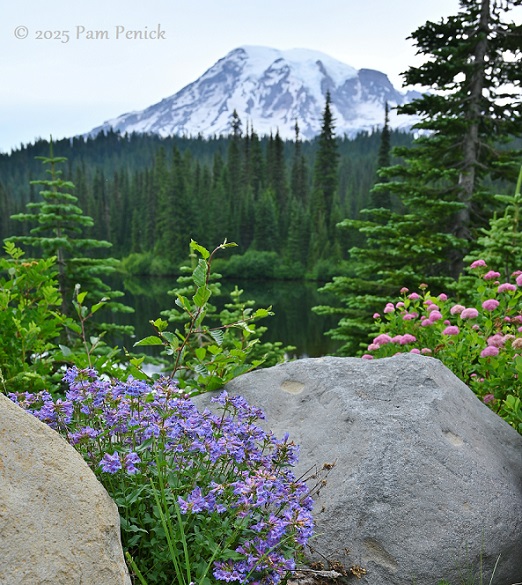
We saved Mount Rainier National Park for last during our national parks tour in Washington last July. Technically, it was just me saving it for last, as David had flown in early from Texas, met up with a climbing group, and ice-axed his way to the summit. Together we returned to Mount Rainier 13 years to the month after our first visit after the 2011 Seattle Fling. This time I was pregaming the Puget Sound Fling, proving once again that the annual Garden Fling (coming up this June in Memphis) offers a great opportunity for further explorations of distant regions.

Mount Rainier’s 14,410-ft peak is an active volcano and the most-glaciated mountain in the contiguous U.S.
Sunrise area
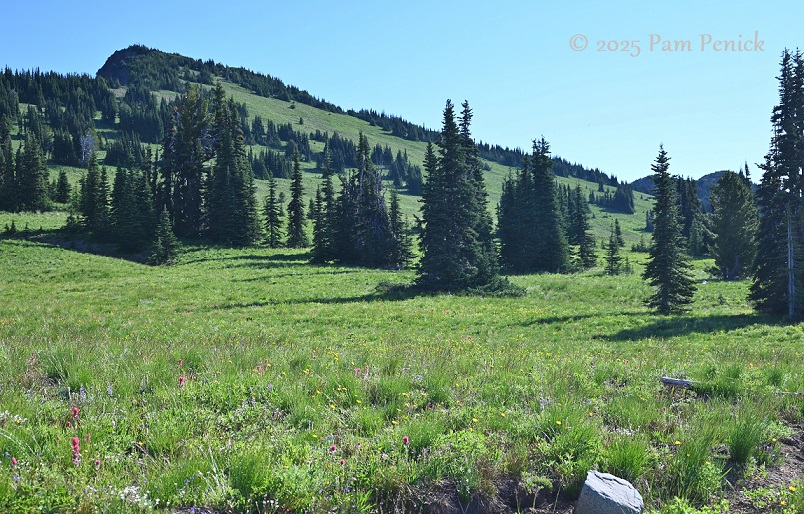
As of 2024, to ease overcrowding, Mount Rainier National Park requires you to reserve a timed-entry permit to access the Sunrise Corridor and Paradise Corridor, two popular areas of the park. Each corridor requires a separate reservation, and we planned on two days to see both areas. We explored the Sunrise area on our first day in the park.
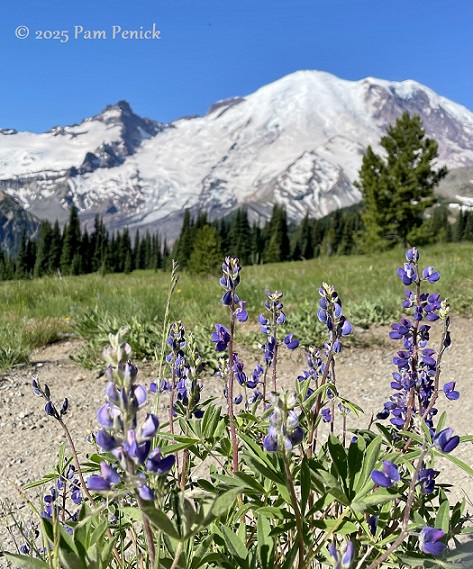
Back in 2011 when we first visited, a long winter and cooler than normal summer meant wildflowers were scarce. This time they were plentiful. Broadleaf lupine was blooming in meadows and along the trails.
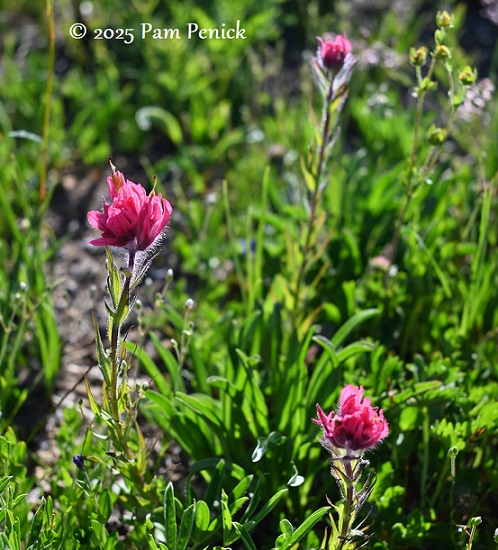
Magenta paintbrush too
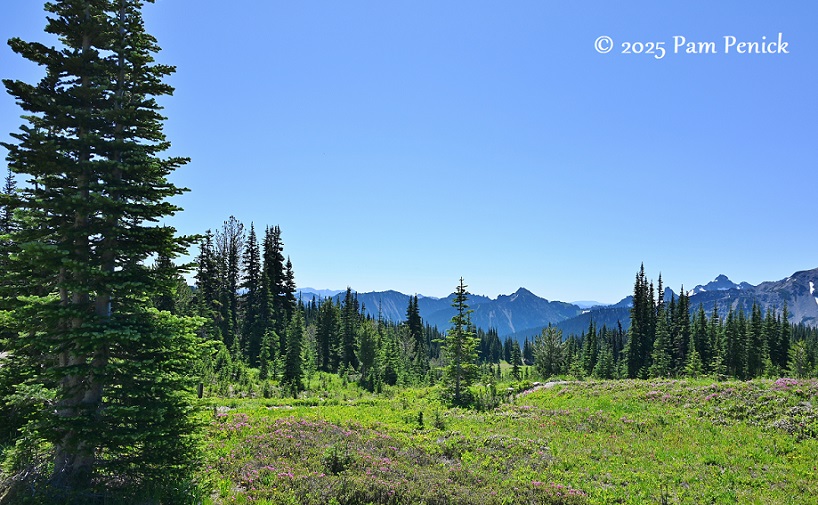
Swaths of pink flowers in a fir-studded meadow
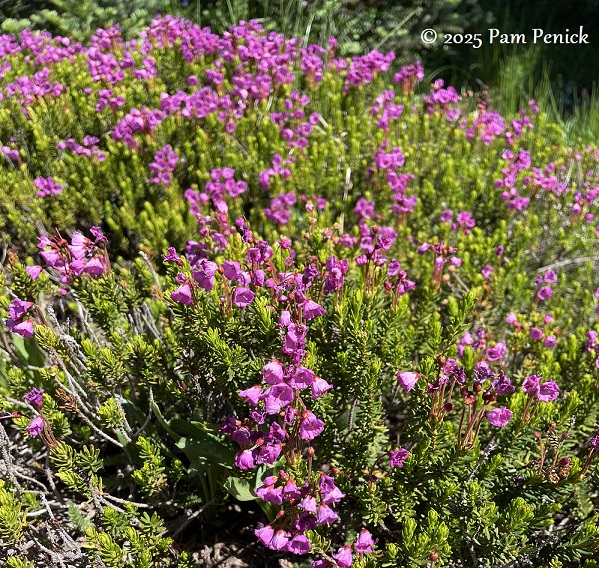
Pink mountain heather
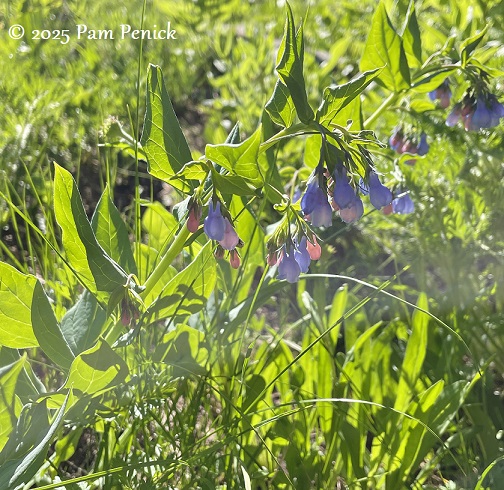
Mountain bluebells, I think
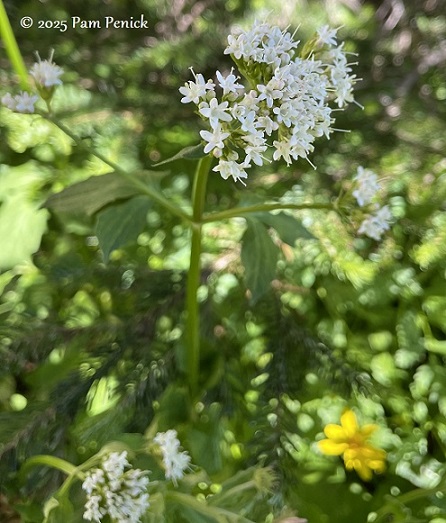
Sitka valerian
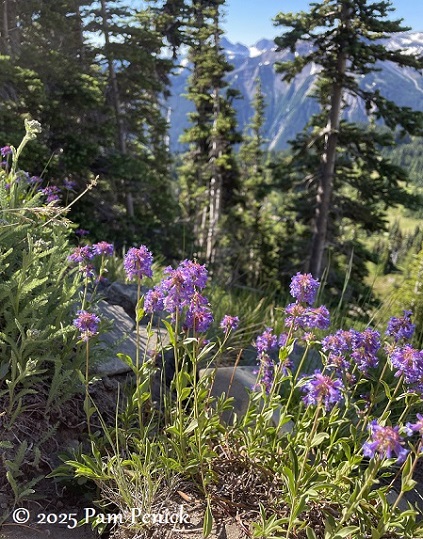
Small-flowered penstemon
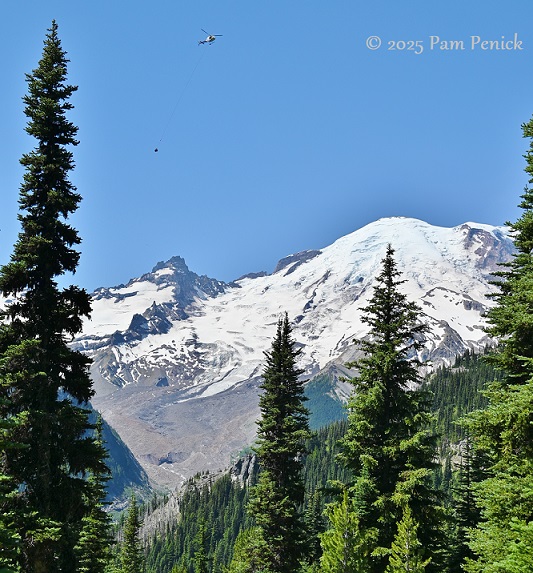
We spotted a helicopter making repeated passes overhead, toting a container on a long tether. We speculated it was carrying out human waste from remote pit toilets up on the mountain. Eww. But also, it’s gotta go somewhere.
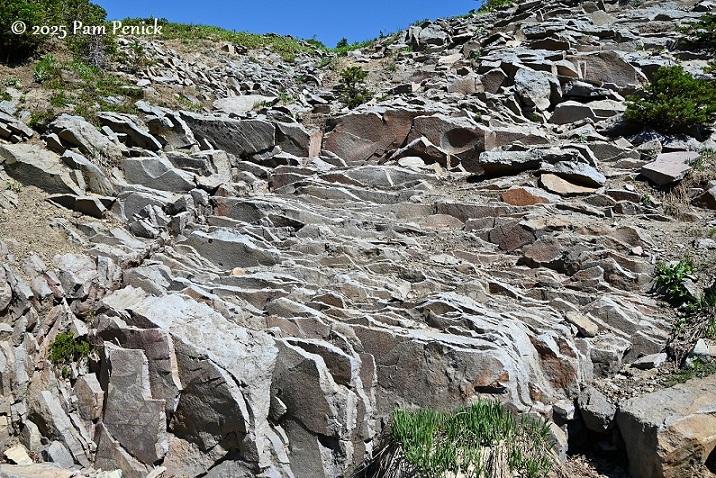
A section of exposed rock reminded me of crevice gardens I’ve seen in Colorado and Austin. The bones…
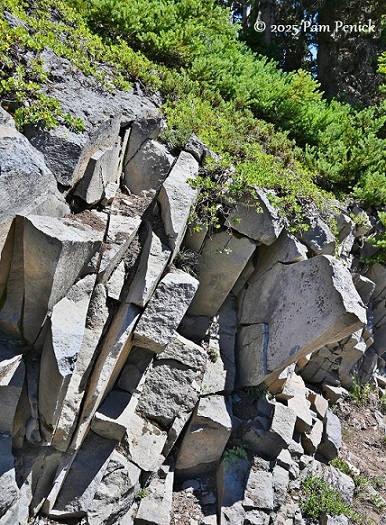
…and the living colonization, with plants creeping through the crevices.
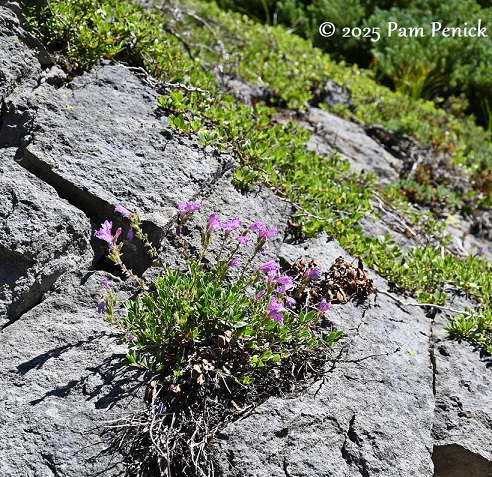
It’s amazing how plants can thrive in these narrow pockets of soil on a slab of rock.
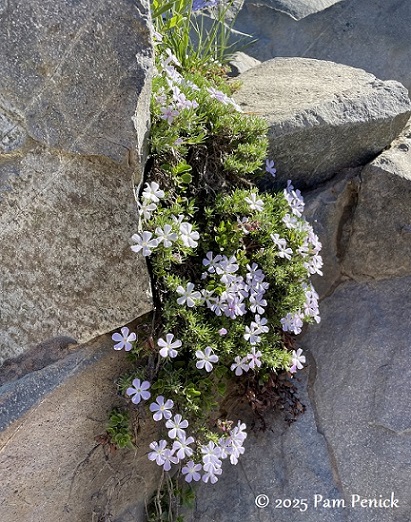
Spreading phlox making a mini hanging garden
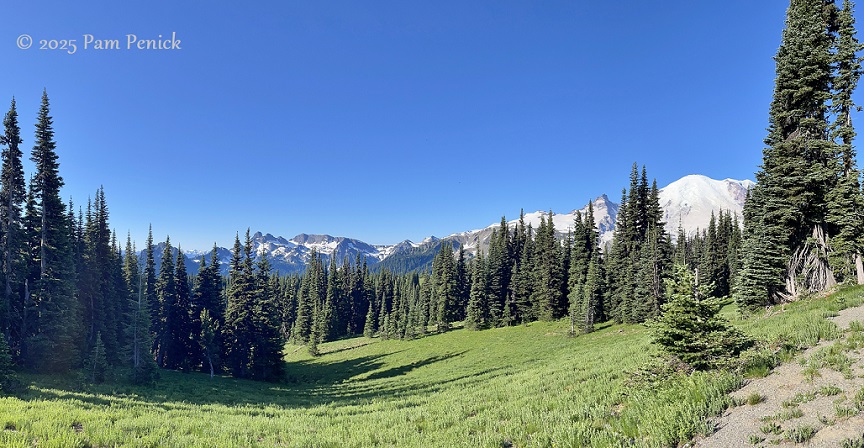
Panoramic vista
Paradise area
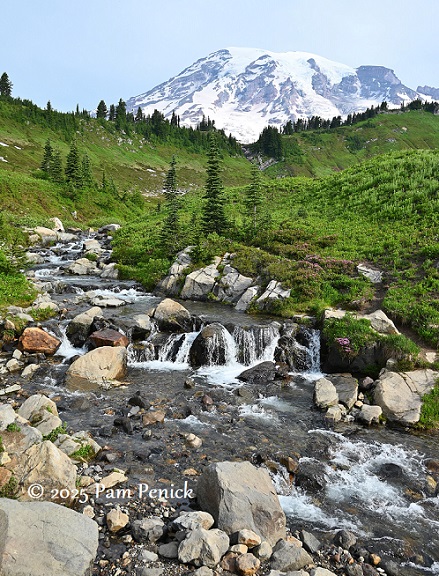
On the second day, we visited the Paradise Corridor and hiked a few trails. Edith Creek makes a pretty cascade flowing down from Mount Rainier.
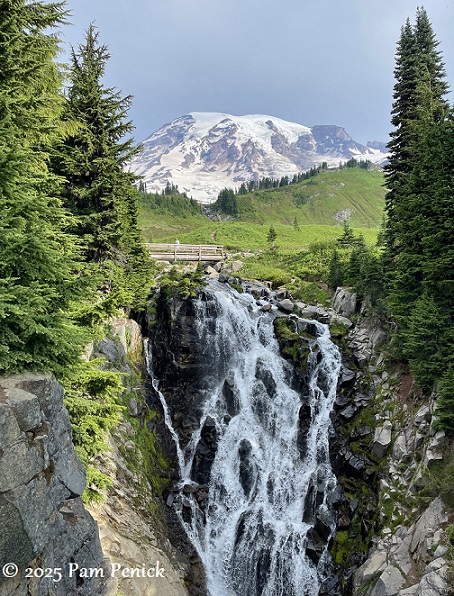
Myrtle Falls provides a more dramatic show.
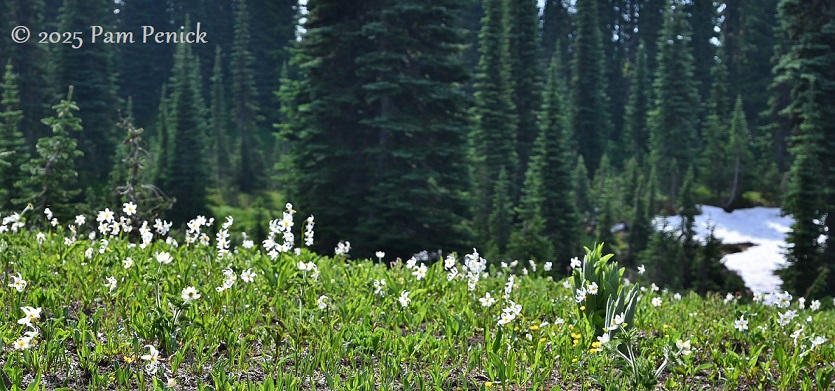
White avalanche lilies were dancing in the alpine meadows, bobbing their heads to a breezy tune only they could hear.
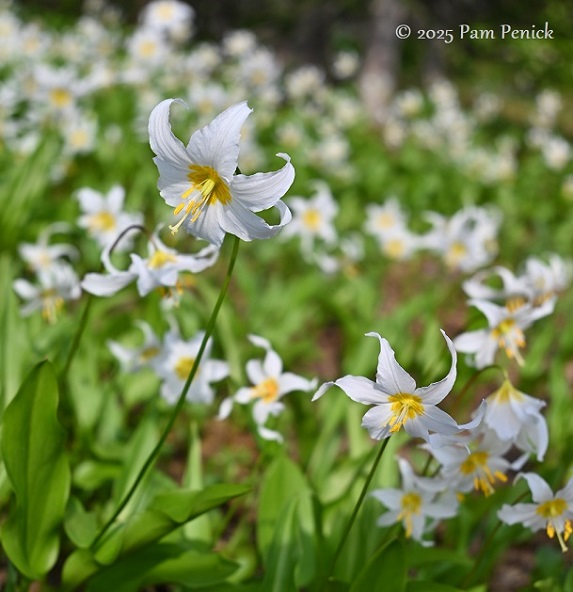
Their starry petals with yellow anthers curve backward atop slender stems.
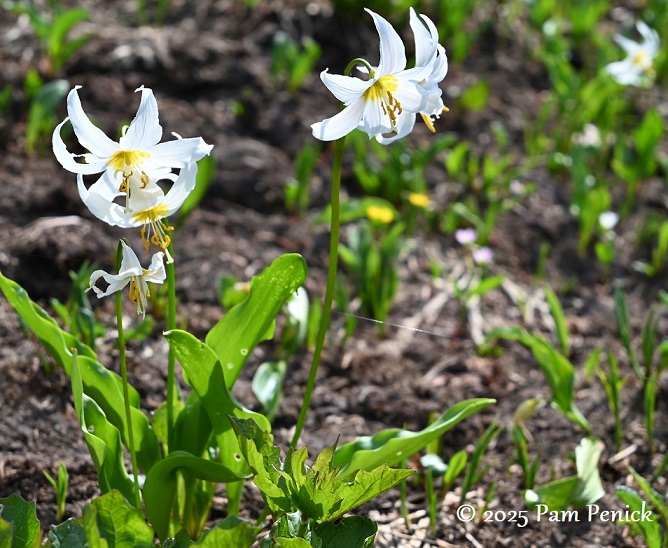
So graceful
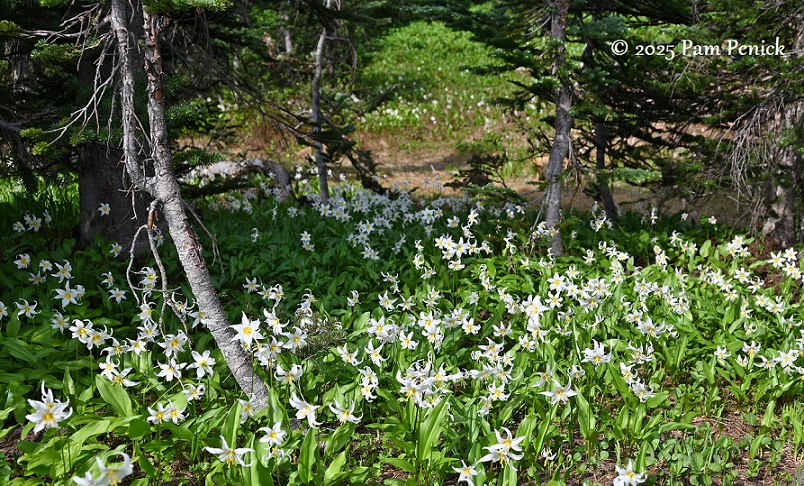
Wordsworth’s daffodil poem comes to mind.
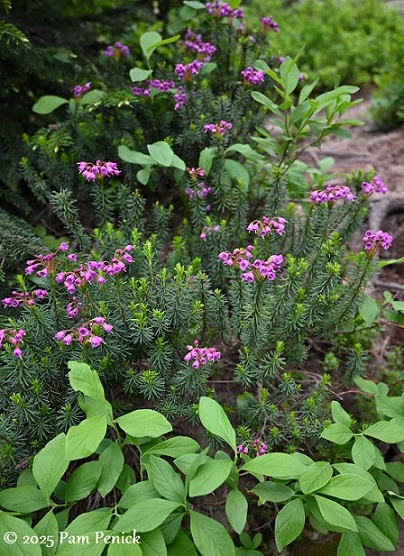
Pink mountain heather
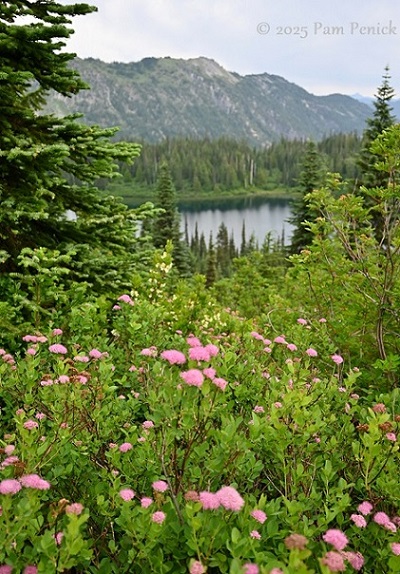
On a stroll around Louise Lake, I admired rosy spirea.
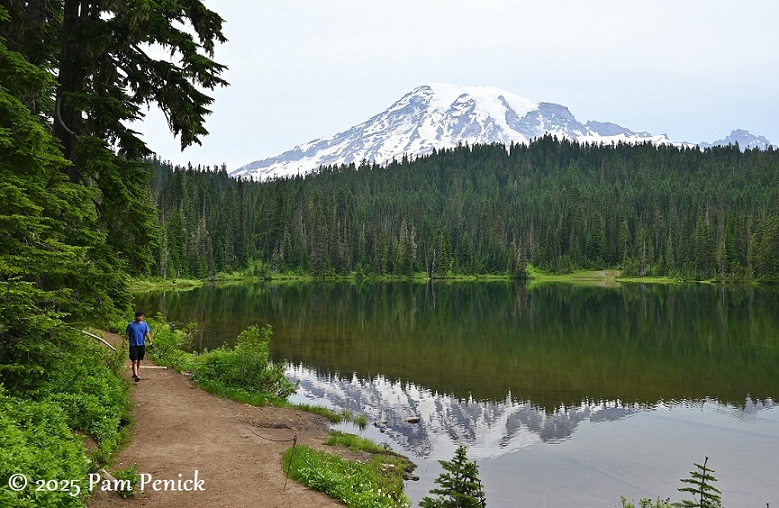
At Reflection Lake, the water doubles the view of majestic Mount Rainier.
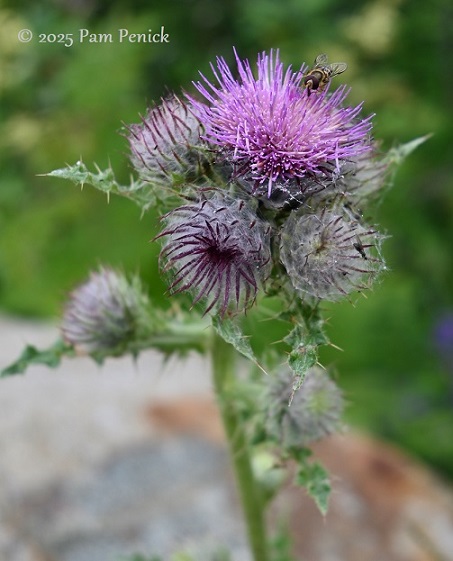
At closer range, a thistle and fly attracted my notice.
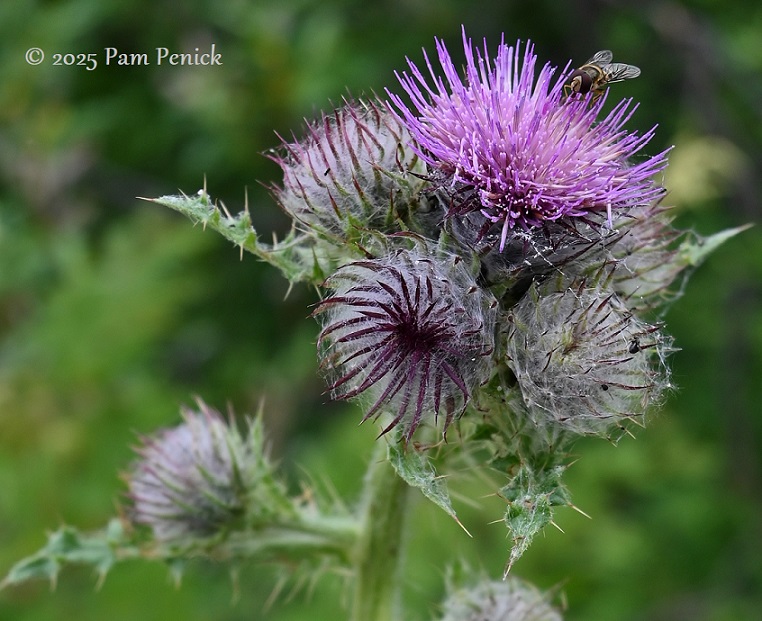
A macroscopic world
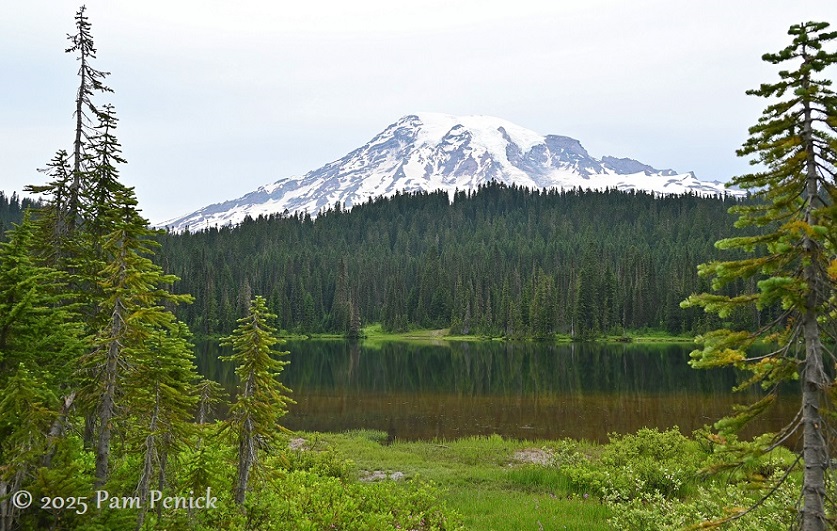
One more of Reflection Lake, sans reflection (you have to be in the right spot)
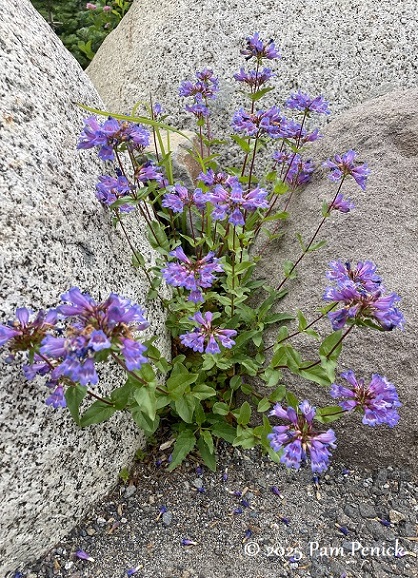
Along the road, gravelly soil and boulders create happy conditions for small-flowered penstemon…
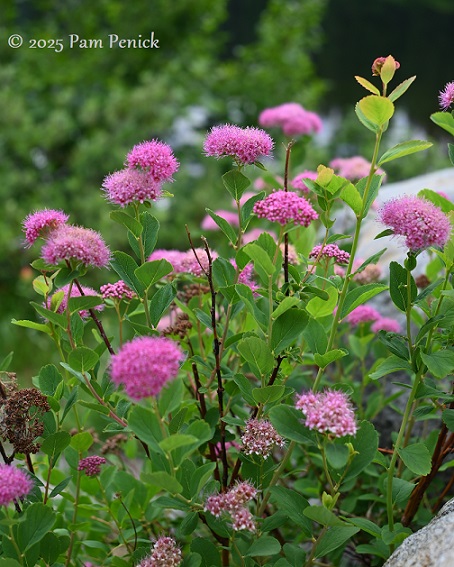
…and more rosy spirea.
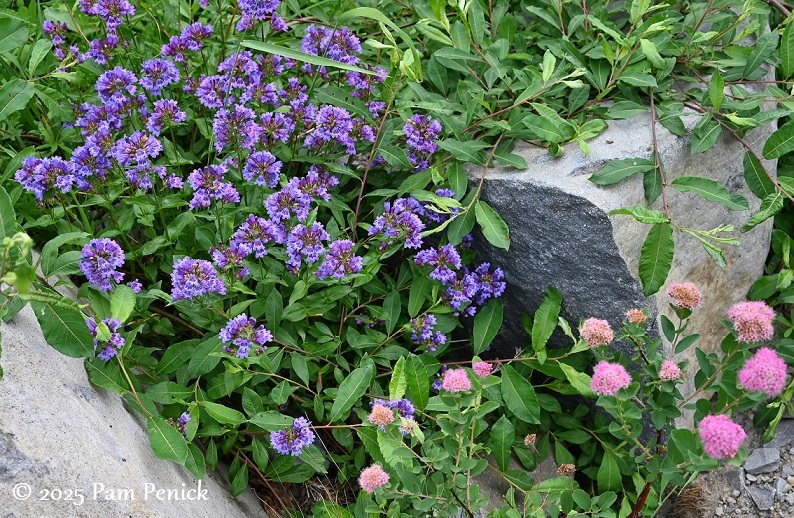
The combo
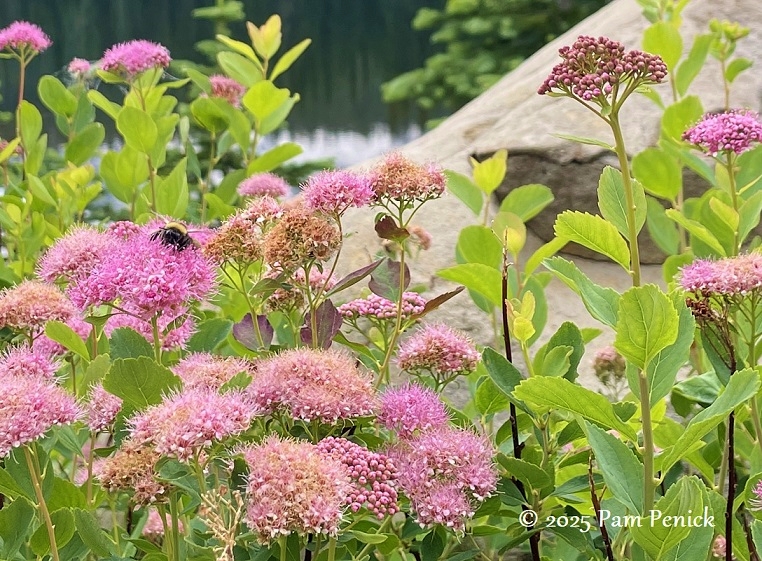
Bumblebees were combing through the spirea.

Spirea and a sky full of Mount Rainier
This concludes my series about Washington’s three national parks. For a look back at Lake Diablo and Rainy Lake in North Cascades National Park, click here.
I welcome your comments. Please scroll to the end of this post to leave one. If you’re reading in an email, click here to visit Digging and find the comment box at the end of each post. And hey, did someone forward this email to you, and you want to subscribe? Click here to get Digging delivered directly to your inbox!
__________________________
Digging Deeper
Come learn about gardening and design at Garden Spark! I organize in-person talks by inspiring designers, landscape architects, authors, and gardeners a few times a year in Austin. These are limited-attendance events that sell out quickly, so join the Garden Spark email list to be notified in advance; simply click this link and ask to be added. Read all about the Season 8 lineup here!
All material © 2025 by Pam Penick for Digging. Unauthorized reproduction prohibited.


Incredibly beautiful photos. I couldn’t pick 10 of my favorites in the bunch, much less one.
Thanks, Kris!
Stunning long views and delightful close ups of the flowers, Pam. All so breathtaking! I’m pondering about Edith, Myrtle, and Louise. Who were they and what were their lives like…?
That’s a good question, and now I’m wondering too. 🙂
I can hardly believe it myself, but it’s been over 40 years since my visit to Mount Rainier. That said, I get to see it in all its snowy glory from my south facing living room window. (Unless hidden by clouds or fog…)
The ‘mini hanging garden’ is a wonderful shot as is the “crevice garden”, courtesy of mother nature.
It must be amazing to look out and see that view every day that the mountain is out, Chavli.
It looks so warm and wonderful. Making me think about all the spring surprises that will be popping up not long after the thaw.
It was a little chilly even in July last year, but I guess that’s life on the slopes of a big mountain.
You are a world class photographer and writer. I am grateful that you have kept up the blog the way you have, it’s truly a gift to your readers!
What a generous compliment, Heidi. Thank you!
All those gorgeous flowers, absolutely breathtaking—-demonstrating the true meaning of “native” species, all accomplished sans an elaborate and zoned sprinkler system!
Wildflower seasons are often brief but showy. I’m glad we caught it.